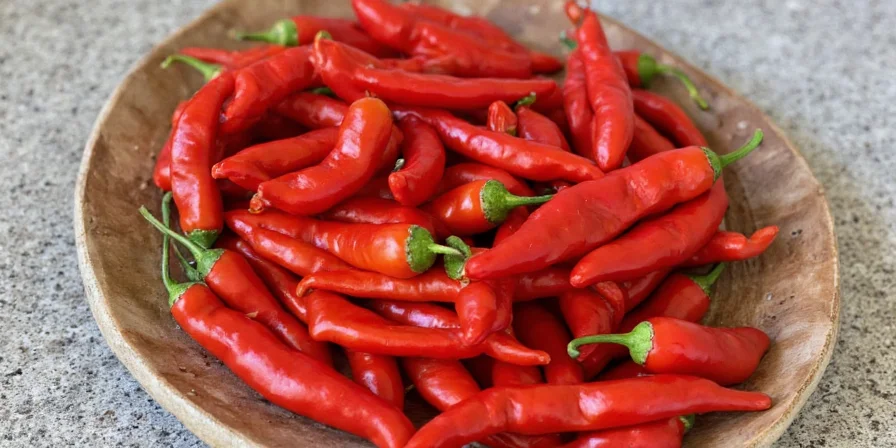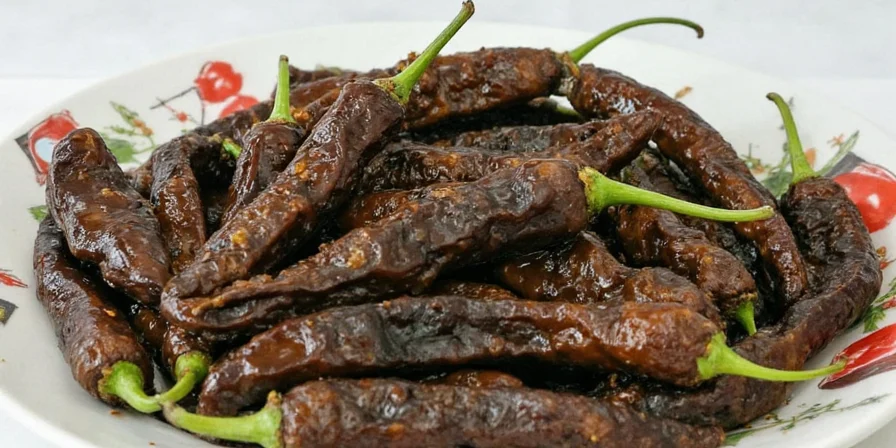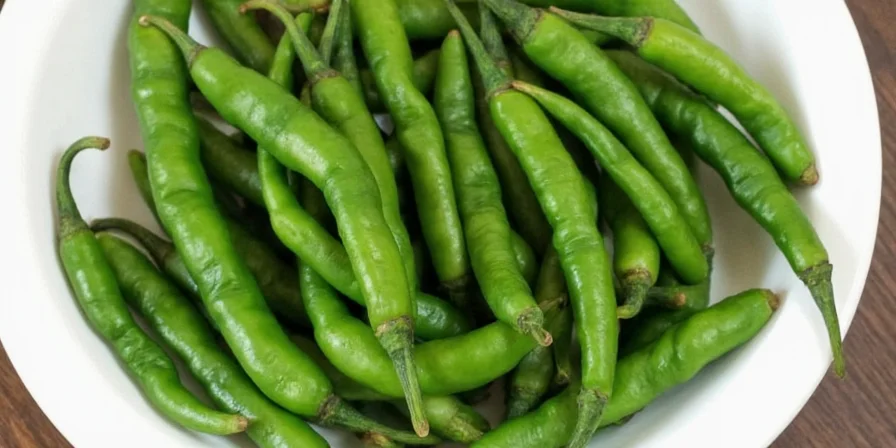Pasilla Peppers: The Dark Horse of the Spice World – Smoky, Rich, and Totally Addictive!
Table of Contents
- What Exactly Is a Pasilla Pepper?
- Flavor Profile & Heat Level
- How It Compares to Other Chilies
- 5 Creative Ways to Use Pasilla Peppers in Your Kitchen
- Growing Your Own Pasilla Peppers
- Storage Tips for Maximum Flavor
- Final Thoughts: Why Pasilla Deserves a Spot in Your Spice Cabinet
What Exactly Is a Pasilla Pepper?
If you're new to the world of Mexican chilies, the pasilla pepper might sound like an exclusive spice only used by Michelin-starred chefs or daring home cooks who don't blink when chopping ghost peppers.
In reality? It’s just the dried version of the chilaca chili! Yep, once this long, wrinkly green chili matures and dries out, it becomes the pasilla—a staple in traditional mole sauces and rich, smoky dishes across central and southern Mexico.
The name 'pasilla' actually means “little raisin” in Spanish—nope, not because it tastes like one, but because of its dark, shriveled appearance. So if you ever spot a super-dark, narrow, almost sad-looking pepper at the market, congratulations—you’ve found your pasilla soulmate.
Flavor Profile & Heat Level
Now let's talk taste—because that’s why we’re all here, right?
A pasilla brings more than just heat to the table (literally). Its flavor is deep, earthy, slightly sweet, with hints of dried fruit, cocoa, and even coffee. Think of it as the James Bond of peppers—suave, complex, and always leaving you wanting more.
- Heat Level: Mild to moderate on the Scoville scale (around 1,000–2,500 SHU)
- Flavor Notes: Earthy, herbal, prune-like, chocolate undertones
- Best Used In: Sauces, moles, stews, soups, marinades
It’s not going to make you sweat buckets or reach for a glass of milk, but it definitely adds character to any dish it graces. Like a background actor who steals the scene every time they walk on camera.

How It Compares to Other Chilies
Confused between pasilla, poblano, ancho, and mulato? You're not alone. Let’s clear up the chili confusion once and for all:
| Pepper | Origin | Heat (SHU) | Flavor Notes | Best For |
|---|---|---|---|---|
| Pasilla | Mexico | 1,000–2,500 | Dried fruit, cocoa, herbs | Mole sauces, salsas |
| Ancho | Mexico | 1,000–2,000 | Sweet, raisiny, tobacco | Mole, adobo |
| Mulato | Mexico | 2,500–3,000 | Chocolate, licorice, coffee | Rich sauces, desserts |
| Poblano | Fresh form of Ancho | 1,000–2,000 | Grassy, peppery, smoky | Stuffed peppers, tacos |

5 Creative Ways to Use Pasilla Peppers in Your Kitchen
- Make Your Own Mole Sauce: The classic use for pasilla. Combine with almonds, sesame seeds, tomatoes, and spices for a deep, flavorful sauce that pairs perfectly with chicken or turkey.
- Upgrade Your Chili: Tired of the same old beef chili? Add rehydrated pasilla for a mysterious, rich depth that’ll leave your guests guessing your secret ingredient.
- Smoky Tomato Soup: Roast some tomatoes, blend with soaked pasilla peppers, garlic, and a dash of cumin for a cozy, warming soup.
- Meat Rubs: Crush dried pasilla into powder and mix with smoked paprika, salt, and brown sugar for a killer rub on grilled pork or brisket.
- Homemade Hot Sauce: Blend pasilla with vinegar, citrus juice, garlic, and a bit of honey for a tangy, smoky hot sauce that jazzes up everything from eggs to enchiladas.
Growing Your Own Pasilla Peppers
If you’re feeling adventurous (and live in a climate warm enough to grow peppers), you can try growing pasilla yourself. Just remember: these are originally fresh chilaca peppers, so you’ll need to let them fully mature and dry before transforming them into pasilla magic.
- Start seeds indoors 6–8 weeks before last frost.
- Transplant outdoors after danger of frost has passed.
- Harvest peppers when they turn from green to dark red/brown.
- Dry naturally in the sun or in a food dehydrator until completely crisp.

Storage Tips for Maximum Flavor
Pasilla peppers, like most dried chilies, can last for months—or even years—if stored properly. But just because they last forever doesn’t mean they won’t lose flavor over time. Here’s how to keep them tasting fresh:
- Airtight Container: Store in a sealed jar or bag away from light and moisture.
- Freeze for Long-Term: Place in a ziplock bag and freeze—it helps preserve the oils and aromatics longer.
- Use Within 6–12 Months: For best flavor. After that, they’re still usable but may be less potent.
- Toast Before Using: This enhances their natural aroma and releases oils for richer flavor.

Final Thoughts: Why Pasilla Deserves a Spot in Your Spice Cabinet
So there you have it—the lowdown on what a pasilla pepper is, why it matters, and how to fall head over heels for its subtle yet powerful flavor. Whether you’re cooking a rustic stew, experimenting with homemade mole, or just want to add a touch of mystery to your next meal, pasilla is your go-to ally.
Don’t be fooled by its wrinkly, unassuming look—this is a spice with soul, history, and layers of flavor that’ll make your kitchen feel instantly more gourmet. And hey, if you ever forget which chili is which, just remember: pasilla = deep, dark, delicious drama in a pepper costume.
Next time you’re at the market, grab a few pasillas and let them work their magic. You might just find yourself writing love letters to this unsung hero of the spice rack.











 浙公网安备
33010002000092号
浙公网安备
33010002000092号 浙B2-20120091-4
浙B2-20120091-4